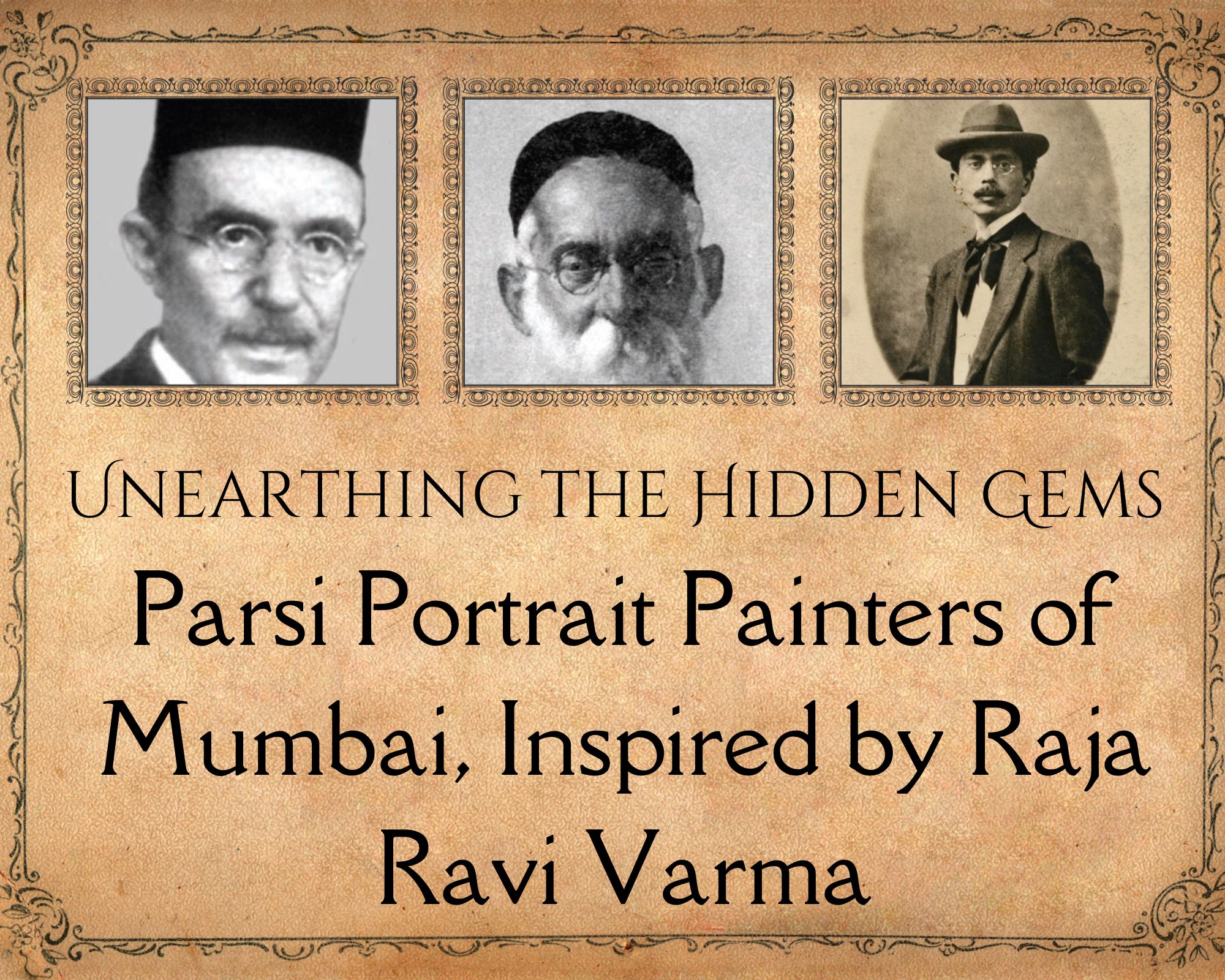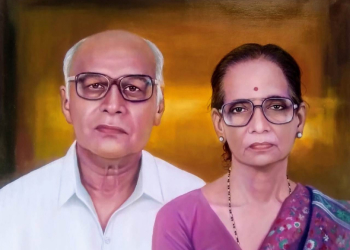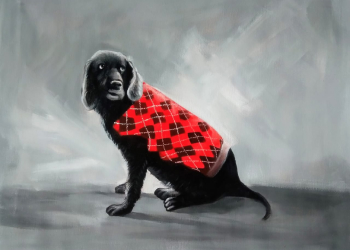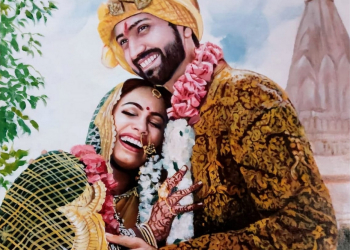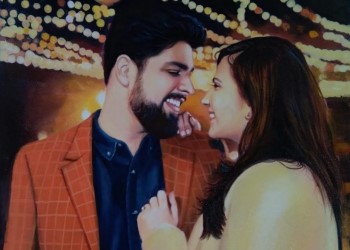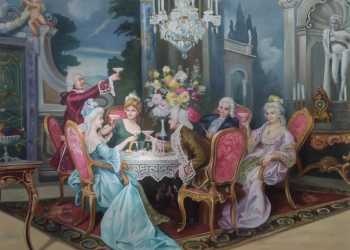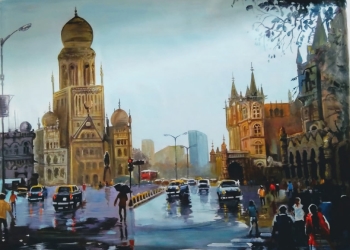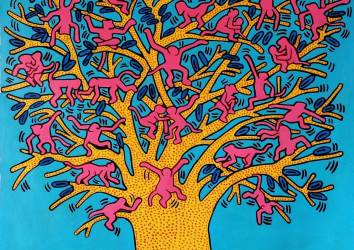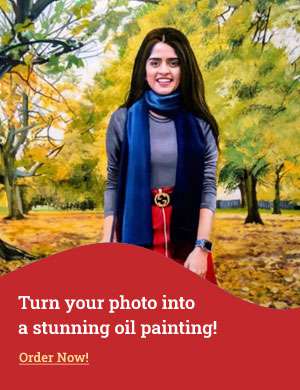In this blog post, we delve into the realm of Parsi artistry, presenting three hidden gems from the Parsi art community—artists who drew inspiration from Raja Ravi Varma and his distinctive style of academic realism and naturalism.
Raja Ravi Varma: The Pioneer of Modern Indian Art
Raja Ravi Varma, often hailed as India's greatest painter and portrait artist of the modern age, played a pivotal role in bringing Indian art to the forefront of the artistic landscape. His innovative approach involved blending European academic art with Indian sensibilities and iconography, resulting in a transformative impact on the art market in India. Through his mesmerizing oil portrait paintings and historical narrative paintings and widely reproduced oleographs, Varma not only revolutionized artistic techniques but also successfully reached the emerging middle class, transforming the formal Western academic style of realism into a captivating urban pop culture phenomenon. Raja Ravi Varma’s cult status and unparalleled success became a beacon of inspiration for countless contemporaries and followers alike.
The Parsi Community: Embracing Varma's Influence
Among the various communities in India, one that found profound inspiration and influence in the artistic realm of Raja Ravi Varma was the artists of the Parsi community. The Parsis, whose name signifies "Persians," trace their lineage back to Persian Zoroastrians—devotees of the Iranian prophet Zoroaster (or Zarathustra). Seeking refuge from Muslim persecution, Parsis arrived in India approximately a thousand years ago. The first wave of Parsi refugees sought asylum under the benevolence of King Jadi Rana, ultimately settling in Diu, Kāthiāwār, in modern-day Gujarat.
Despite constituting a mere 0.007 percent of the country’s population, Parsis have played an outsized role in India's development across a wide range of fields. Whether in politics, commerce and industry, education and research, music, or art, the contributions of Parsis have been nothing short of extraordinary.
Parsi Contributions: From Politics to Commerce and Art
In the realm of politics, Dadabhai Naoroji stands out as the "Grand Old Man of India" and one of the founding members of the Indian National Congress party. His unforgettable mark on the political landscape paved the way for significant social and political reforms in the country.
When it comes to commerce and industry, the Parsi community has produced remarkable entrepreneurs who have shaped India's economic landscape. Jamsetji Tata, the visionary founder of the Tata Group, and Ardeshir Godrej, the pioneering force behind the Godrej group, epitomize the Parsis' entrepreneurial spirit and business acumen.
The development of art in modern India has also been greatly influenced by the enterprising Parsis. The establishment of the Sir J. J. School of Art in 1857, made possible by a generous donation of Rs. 100,000 from Sir Jamsetjee Jeejebhoy—an esteemed businessman, shipping magnate, and philanthropist—heralded a new era in the practice of art and creating an environment conducive to artistic development. This premier art training school in India sparked a revolution in art education and paved the way for the emergence of exceptional talents.
Revealing the Hidden Gems: Parsi Portrait Painters
In this blog post, we delve into the realm of Parsi artistry, presenting three hidden gems from the Parsi art community—artists who drew inspiration from Raja Ravi Varma and his distinctive style of academic realism and naturalism. These master portrait painters skillfully emulated Varma's techniques, capturing the essence of their subjects with remarkable precision and artistry to create mesmerizing portrait paintings. Join us as we explore the rich artistic legacy of these talented Parsi painters and uncover their contributions to the artistic landscape of Mumbai.
Rustom Siodia: Pioneering Muralist and Portrait Painter
Early Life and Artistic Influences
Rustom Siodia, born in 1881 to a Parsi family in Bombay, entered the world during a period of significant transformation. The city of Bombay (now Mumbai) experienced a surge in economic prosperity due to the opening of the Suez Canal, the establishment of cotton mills, and a thriving trade in cotton and opium. As wealth flowed into the city, its affluent residents began to embrace the arts, commissioning portraits and collecting art and antiquities.
Recognizing his early artistic potential, Siodia enrolled in the Sir JJ School of Art, where he honed his skills and embraced the principles of academic realism. He believed that a solid foundation in academic realism was essential for teaching art effectively. However, his ambitions extended beyond the boundaries of his hometown.
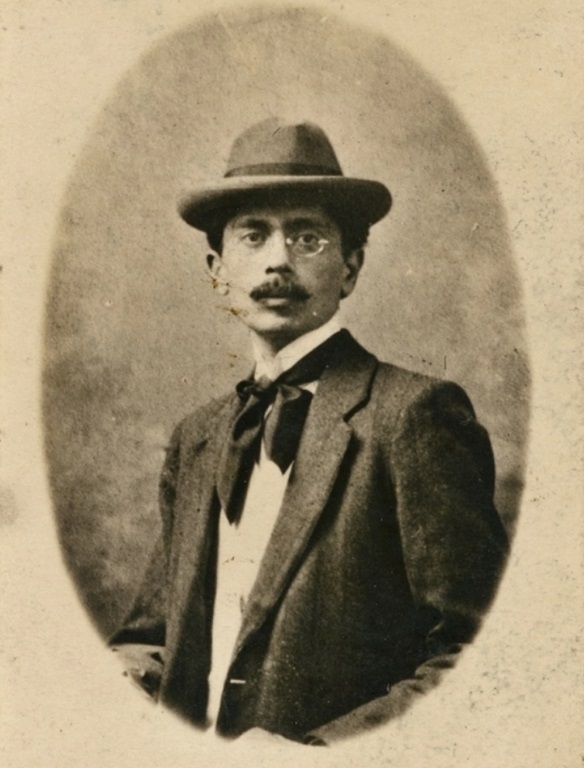 Parsi Portrait Artist of Mumbai Rustom Siodia (Image Credits: Parsi Khabar)
Parsi Portrait Artist of Mumbai Rustom Siodia (Image Credits: Parsi Khabar)
Studying at the Royal Academy of Arts in London
In 1908, Siodia embarked on a journey to expand his artistic horizons, enrolling in the renowned Royal Academy of Arts in London. Under the tutelage of the esteemed portrait artist John Singer Sargent, Siodia refined his technique and absorbed the techniques of portrait painting in the Western world. Notably, he became the first Parsi and the second Indian to study at the prestigious institution, making him a pioneer in his own right.
Establishment and Success in India
Returning to India in 1913, Siodia established a studio in the Grant Road area of Bombay. His reputation as a portrait artist and exceptional talent quickly garnered attention, leading to a multitude of portrait commissions from discerning patrons wanting to make their portrait paintings. Siodia's most prolific period as an artist spanned from 1915 to 1939, during which he produced a significant body of work on paper and canvas. Additionally, he received prestigious commissions to paint murals in prominent locations such as the Imperial Secretariat (now known as the Rashtrapati Bhavan) in New Delhi and the Royal Opera House in Bombay.
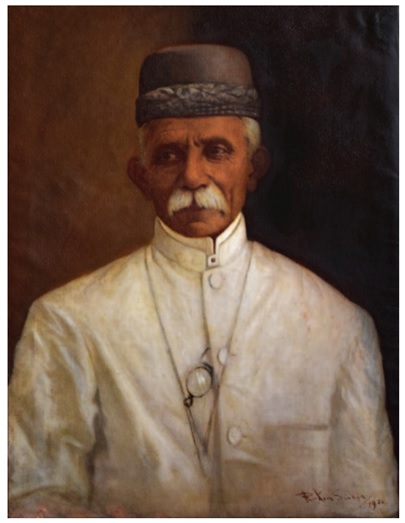
Oil Portrait Painting of Machersha Palonjee by Rustom Siodia (Image Credits: The Indian Portrait V: Colonial Influence on Raja Ravi Varma and his Contemporaries)
Title: Khan Saheb Manchersha Palonjee Kikobad (Oil Portrait)
Creator: Rustom Siodia
Date Created: 1920
Physical Dimensions: 30 inches x 23 inches ( 76 cm x 58.5 cm)
Medium: Oil portrait painting on cardboard
Location: Private Collection
Order Your Custom Handmade Oil Portrait Painting from Photo today
Mural Painting and Diverse Themes
One of Siodia's notable achievements was his involvement in the British Government's open competition for interior decoration at the Imperial Secretariat. The Sir JJ School of Art, under the leadership of Gladstone Solomon, emerged victorious over renowned rivals like the esteemed Bengal School, led by Abanindranath Tagore. Siodia's mural paintings within the Imperial Secretariat showcased a diverse range of themes, reflecting influences from his British education and exploration of Persian elements.
His murals encompassed subjects as varied as Cinderella, Bluebeard, the four seasons, and tales from Harun al-Rashid. A testament to his remarkable efficiency, Siodia completed an impressive 750 square feet of mural work in under six weeks in 1929. However, despite his considerable achievements, Siodia gradually faded into obscurity following his death in 1946.
Legacy and Recognition
Today, one of the few publicly displayed works attributed to Siodia can be found at the CSMVS museum in Mumbai. This portrait painting serves as a testament to his talent and forms part of the exhibition titled "Pravaha," which highlights the Sir JJ School of Art's significant contribution to the advancement of art in India.
Rustom Siodia's pioneering spirit, dedication to artistic excellence, and contributions to mural painting and portraiture left an enduring imprint on the creative landscape of India. His exploration of diverse themes and incorporation of various artistic influences exemplify his unique artistic vision
Pestonji Bomanji: Pioneering Parsi Portrait Painter
Early Education and Artistic Influences
Pestonji Bomanji (1851-1938), a talented Parsi artist, is one of the first portrait painters to emerge from the Bombay Art School. His artistic journey began at a remarkably young age, as he joined the JJ School of Art when he was just thirteen years old. It was during his time at the school that his artistic potential caught the attention of Principal John Griffiths, who recognized Bomanji's exceptional work at the Ajanta caves. In 1877, Bomanji was recommended to Valentine Prinsep, which would prove to be a transformative turning point in his artistic career. Although initially drawn to sculpture, his encounter with Prinsep steered him towards the captivating realm of portraiture.
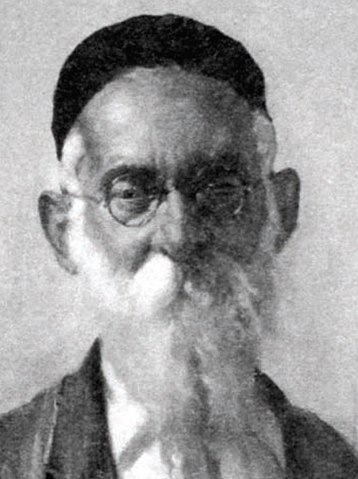 Parsi Portrait Artist Pestonji Bomanji (Image Credits: Wikipedia. Commons)
Parsi Portrait Artist Pestonji Bomanji (Image Credits: Wikipedia. Commons)
Contributions to the Art School and Exhibition Success
In 1894, Bomanji became one of the first Indian teachers at the art school, marking a significant milestone in his association with the institution. His dedication and expertise in portraiture were highly regarded, and he even briefly served as the Vice Principal.
Noted art critic and art historian Partha Mitter wrote, "No one was more conscious than Bomanji that exhibitions could make or break an artist. Encourage by Griffiths, he featured regularly at shows around the country."
Recognition and Realistic Portraits
 At Rest oil painting on canvas by Pestonji Bomanji (Image Credits: Wikipedia Commons)
At Rest oil painting on canvas by Pestonji Bomanji (Image Credits: Wikipedia Commons)
Title: At Rest
Creator: Pestonji Bomanji
Date Created: Unknown
Physical Dimensions: 120 inches x 80.70 inches ( 305 cm x 205 cm)
Medium: Oil portrait painting on cardboard
Location: National Gallery of Modern Art, New Delhi, India
Bomanji's talent and skill as a portrait painter and artist were acknowledged through numerous prestigious awards. In 1879, he became the first Indian artist to win the top prize in Calcutta (now Kolkata). His success continued at the International Exhibition held between 1883 and 1884, where his portrait painting titled "Parsi Lady Sewing" fetched an impressive sum of Rs. 500—a significant sum during that era. Another notable achievement came in 1889 at the inaugural show of the Bombay Art Society, where his painting "Parsi Tiger Slayer" was lauded as the "best exhibit by a native artist." The Times of India described Bomanji's portrait paintings as "realistic and warty". The un-glamourized realism of his portrait painting works invited comparisons with Dutch realists.
Ethnographic Study and Representation of Parsi Women
As one of the earliest Parsi artists practicing art in India, Bomanji's work offers a valuable ethnographic study of Parsi customs and practices. Notably, his portraits provide glimpses into the vibrant cultural tapestry of the Parsi community. A unique aspect of his work is the number of portrait paintings of women, which serves as a reminder that Parsi women from the progressive Parsi community were among the earliest to enter public life compared to women from other communities.
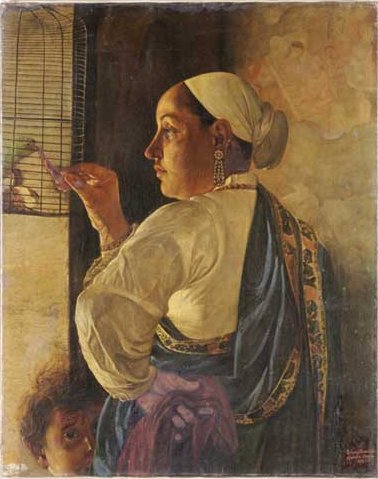 Feeding the Parrot Oil Painting by Pestonji Bomanji (Image Credits: Wikipedia Commons)
Feeding the Parrot Oil Painting by Pestonji Bomanji (Image Credits: Wikipedia Commons)
Title: Feeding the Parrot
Creator: Pestonji Bomanji
Date Created: 1882
Physical Dimensions: 30.11 inches x 34.01 inches (76.5 cm x 61 cm)
Medium: Oil portrait painting on canvas
Location: Chhatrapati Shivaji Maharaj Vastu Sangrahalaya, Maharashtra India
Order Your Portrait Painting from Photo today!
Pestonji Bomanji's contributions to the art world, both as an accomplished portraitist and an influential figure within the Bombay Art School, have left a lasting imprint on the artistic landscape of India. His realistic and insightful portrayals, combined with his commitment to capturing the essence of Parsi culture, continue to serve as a testament to his talent and artistic vision.
Manchershaw Pithawalla: A Portraitist's Journey
A Humble Background and Artistic Talent
Manchershaw Fakirchand Pithawalla (1872-1937), hailed from the modest village of Pitha in Surat, Gujarat. Despite his humble background, Pithawalla possessed an exceptional talent for art, which would ultimately shape his remarkable journey. His artistic prowess was recognized and nurtured by John Griffiths, the principal of the Sir Jamsetjee Jeejebhoy School of Art (commonly known as JJ School of Art). Pithawalla's formative years were spent at the school from 1888 to 1896, immersing himself in the study and practice of art.
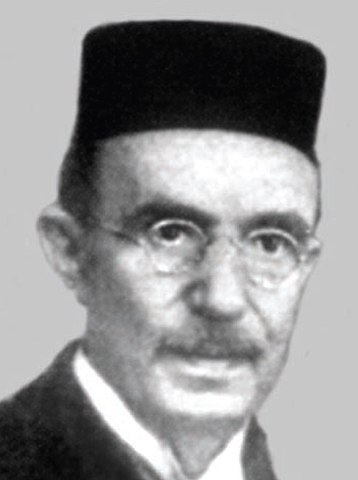 Parsi Portrait Artist of Mumbai M.F. Pithawalla (Image Credits: Wikipedia Commons)
Parsi Portrait Artist of Mumbai M.F. Pithawalla (Image Credits: Wikipedia Commons)
Rising Recognition and Achievements
Pithawalla's artistic abilities soon garnered recognition, and in 1894, he achieved his first notable accolade at the Bombay Art Society. Significantly, he became the sole artist to win three consecutive prizes at this prestigious institution. His portrait painting, "Parsi Girl," received high acclaim in Simla in 1902, further solidifying his growing reputation. In 1905, Pithawalla received a momentous invitation to create an album celebrating Indian womanhood, which was to be presented to Queen Mary during her royal visit to India.
A Dream Fulfilled: Journey to Europe
A few years later, he visited Italy to witness the work of the European Old Masters like Leonardo da Vinci’s Mona Lisa, firsthand fulfilling a lifelong dream. This voyage allowed him to immerse himself in the artistic treasures of Europe and deepen his understanding of the classical European style. After his Italian sojourn, Pithawalla proceeded to England, where he held a highly anticipated exhibition of his works in October 1911 at the prestigious Doré Gallery— named in honor of the French artist Gustave Doré. He produced and exhibited 25 works in the exhibition in that short period.
Recognition and Reception in London
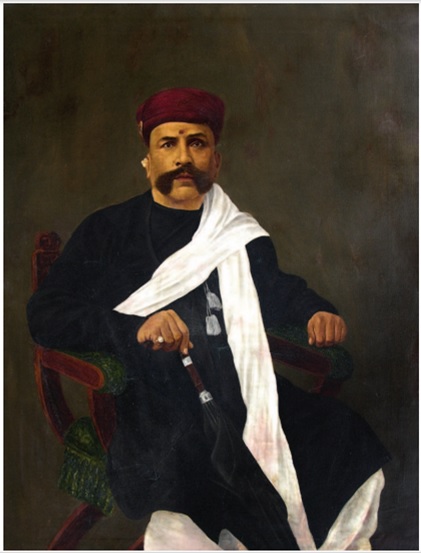 Portrait Painting of Gokuldas Mulchand by M.F Pithawalla (Image Credits: The Indian Portrait V: Colonial Influence on Raja Ravi Varma and his Contemporaries)
Portrait Painting of Gokuldas Mulchand by M.F Pithawalla (Image Credits: The Indian Portrait V: Colonial Influence on Raja Ravi Varma and his Contemporaries)
Title: Sheth Ghokuldas Mulchand (Oil Portrait)
Creator: M. F. Pithawalla
Date Created: 1906
Physical Dimensions: 47.6 inches x 31.8 inches ( 121 cm x 91 cm)
Medium: Oil portrait painting on canvas
Location: Private Collection
Handmade Art Reproductions & Landscape Paintings
Pithawalla's exhibition in London marked a significant milestone, capturing the attention of both the British press and art patrons alike. It was heralded by the British weekly illustrated newspaper, The Graphic, as the first exhibition by an Indian artist in the city, a testament to Pithawalla's pioneering spirit. The Evening Standard, a local newspaper noted that Mr. Pithawalla's work had "definite merits of its own." The magnitude of his achievement was further underscored by a reception hosted in his honor by Sir Mancherjee Bhownaggree, the second Indian to be elected to the British Parliament at that time.
Manchershaw Pithawalla's artistic journey is a testament to his unwavering dedication, unyielding talent, and remarkable achievements. Through his meticulous portraiture and unwavering pursuit of artistic excellence, Pithawalla carved a place for himself in the annals of art history, leaving an indelible mark on the artistic landscape of both India and the international stage.
Conclusion
In conclusion, the Parsi community in India has produced a remarkable lineage of talented artists who have made significant contributions to the world of art. The three hidden gems we explored—Rustom Siodia, Pestonji Bomanji, and Manchershaw Pithawalla—emerge as prominent figures whose artistry and achievements deserve recognition.
Rustom Siodia, a pioneer in his own right, studied at the Royal Academy of Arts in London under John Singer Sargent learning his techniques of portrait painting, making him the first Parsi to achieve such a feat. Upon his return to India, Siodia established himself as a sought-after portraitist and muralist. His impressive mural projects, including those at the Imperial Secretariat and the Royal Opera House, showcased his versatility and creativity. Although he eventually faded into obscurity, Siodia's impact on Indian art cannot be understated.
Pestonji Bomanji, one of the first portrait painters from the Bombay Art School, transitioned from sculpting to portraiture under the guidance of Valentine Prinsep. His realistic and warty style, of portrait painting reminiscent of Dutch realists, set him apart. Bomanji's success at prestigious exhibitions and accolades from the art community showcased his prowess as a painter. Notably, his work offers a valuable ethnographic study of Parsi customs and practices, providing insights into the progressive role of Parsi women in public life.
Manchershaw Pithawalla, with his exceptional talent and training under John Griffiths at the Sir Jamsetjee Jeejebhoy School of Art, established himself as a master portrait artist. His journey took him from winning awards at the Bombay Art Society to capturing the essence of Indian womanhood for a presentation to Queen Mary. Pithawalla's sojourn to Europe, where he held an exhibition of his works in London, elevated his reputation and gained him recognition from the British press and art patrons.
These artists not only drew inspiration from the great Raja Ravi Varma but also left their enduring imprint on the artistic landscape. Their contributions have enriched the art scene in India, showcasing the talent and creativity within the Parsi community. Through their art, these hidden gems have captured the beauty, diversity, and spirit of their subjects, leaving behind a legacy that resonates with audiences to this day.
About Us:
Paintphotographs.com is India's leading custom art platform. We turn your favorite photos, pics, and images into luxurious handmade portrait paintings. Our work includes handmade portraits, custom oil reproductions, charcoal drawings, and sketches. As a team of accomplished artists, we use museum-quality canvas, the best international brands of colors such as Winsor & Newton and Daler Rawney. We work with various mediums, including oil, acrylic, mixed media, graphite, and charcoal.
To order a custom handmade oil portrait painting you can visit our order now page. You can order custom Wedding Paintings, Couple Paintings, Memorial Paintings, Family Paintings, Baby portraits and Children Paintings, Photo to paintings, and Pet Portrait Paintings from Photo.
You can visit our pricing page to know the prices of our portrait paintings. To connect with us ping us on our chat messenger on the website, ping us on WhatsApp, call us at 918291070650, or drop us an email at support@paintphotographs.com
You can visit our gallery pages to see our work. We make photo to paintings, couple paintings, memorial paintings, Kids and Baby Portrait paintings, God & Religious Paintings, Old Photo to Paintings, Wedding couple Paintings & Marriage Portraits, Family Paintings, Pet Portrait Paintings, Radha Krishna Paintings, Oil Portraits of Gurus, Saints & Holy Men, Charcoal and Pencil Sketches, Custom Landscape & Cityscape paintings, Contemporary Art Reproduction & Replica Paintings, Old Master Reproduction & Replica Art, Monochrome and Black & White portrait paintings, Historical Portraits and Shivaji Maharaj Paintings, Celebrity & Political Leaders Portraits. We can also merge separate photos to create a single seamless painting called Composite portraits to add deceased loved ones to make a family oil portrait as though they were present.
Our custom handmade portraits make beautiful Anniversary Gifts, Engagement Gifts, Birthday Gifts, Retirement Gifts, Housewarming Gifts, Mother's Day gifts, and luxurious gifts for many important occasions.
Paintphotographs.com provides bespoke services for art patrons, interior designers, and architects. It helps you create the perfect pieces for residential and commercial projects and serves as a platform for artists to showcase their work.
If you are an art aficionado interested in writing a guest post on art, connect with us.
Want to read more? Check our reading recommendations below! Please refer to the Notes and Reference section for sources referenced in the article.
Like this story? Then you will love our podcasts on Spotify. Listen to our deep dives and fascinating stories from the art world. Join our nearly 20,000-strong community on Facebook, WhatsApp, and X.
Want to see our art? Join our community of 500,000+ subscribers on the Paintphotographs YouTube channel, Instagram, and Pinterest for some amazing art pics & art videos!
Recommended Pieces
How to Convert Your Photo into a Canvas Portrait Painting Online - Handmade
Bring Your Family Tree to Life: Turn Your Old Photos into Stunning Paintings | Paintphotographs
A Closer Look at the Stunning Paintings in Coca-Cola's Latest Ad “Masterpiece” | Paintphotographs
Photorealism: The Art of making a painting from a photo. | Paintphotographs
The life and paintings of artist and painter KCS Paniker | Paintphotographs
Why is Monalisa so famous? Monalisa's portrait painting history | Paintphotographs
Memorial Paintings - The Ultimate Guide to Commissioning one | Paintphotographs
Notes and reference section
Parsi | Religion, History, & Facts | Britannica
Rustom Siodia: A Forgotten Master | Parsi Khabar
https://auctions.pundoles.com/lots/view/1-4TDNK/self-portrait
Rustom D. Siodia | Artist | Royal Academy of Arts
Bid & Hammer > M. F. PITHAWALA (1872 - 1937)
https://www.google.co.in/books/edition/Art_and_Nationalism_in_Colonial_India_18/9mRTtkri8E0C
https://www.google.co.in/books/edition/The_Indian_Portrait_5/W06OBQAAQBAJ?hl=en

